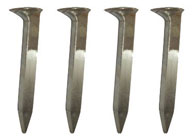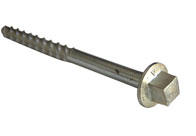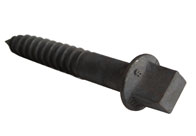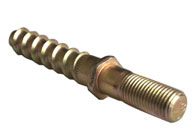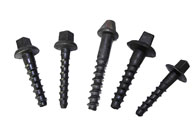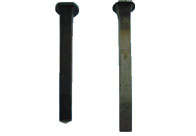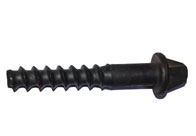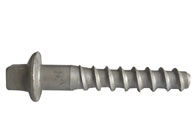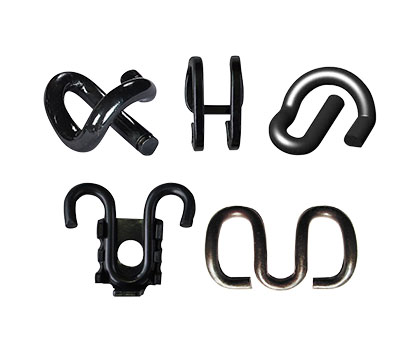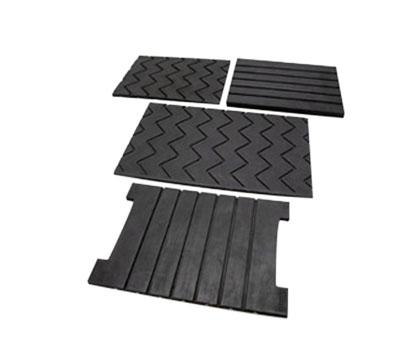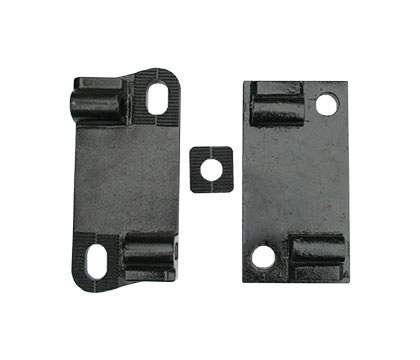Rail spikes provide a mechanical interlock that delivers more than twice the holding power of conventional hammered railway spikes. Rail spikes mainly includes dog spike and screw spike.
Dog Spike / Cut Track Spike
Dog spike , also called cut track spike, and as the name implies, dog spike looks like a dog's head, which is mainly used on T-shaped rails to fasten T-shaped railroad track to wooden ties that have an L-shaped head and a square shank. The bottom of the head is sloped to match the slope of the flange of a rail and the tip is wedge-shaped, not pointed. The wedge is driven into the tie across the grain, which means the wedge is parallel to the track. The square cross section gives a railroad dog spike much higher holding strength than a fastener having the same amount of metal but a circular cross section has; roughly speaking, about 50% more.

Dog spike with the wedge driven across the grain will have about twice as much holding power as one driven with the grain. Early experiments showed that pulling out a 9/16” × 9/16” spike driven 4¼ inches into dry cedar required on average a force of 857 pounds. In seasoned oak, another experimenter needed 4281 pounds. Below is the technical data of dog spike.
| Type | all kinds according to drawings |
| Raw material | Q235 |
| Size | 5/8* 6", 9/16*5-1/2", 3/8"*3-1/2, 1/2*3-1/2, 14*14*150, 16*16*165, etc. |
| Surface | plain(oiled) |
Screw Spike
Screw spikes are commonly used to fasten timber railway ties/sleepers; however, they can also be used in conjunction with plastic ferrules that have been cast into concrete ties/sleepers.
| Type | Ss5, Ss 8, Ss25, Ss36, UIC864-1 Series, etc |
| Raw material | Q235, 35 steel, 45steel, 40Mn2, 20 Mn Si |
| Grade | 4.6, 4.8, 5.6, 8.8 |
| Surface | plain(oiled), black paint, color paint, zinc, HDG, etc |
Rail Spikes
